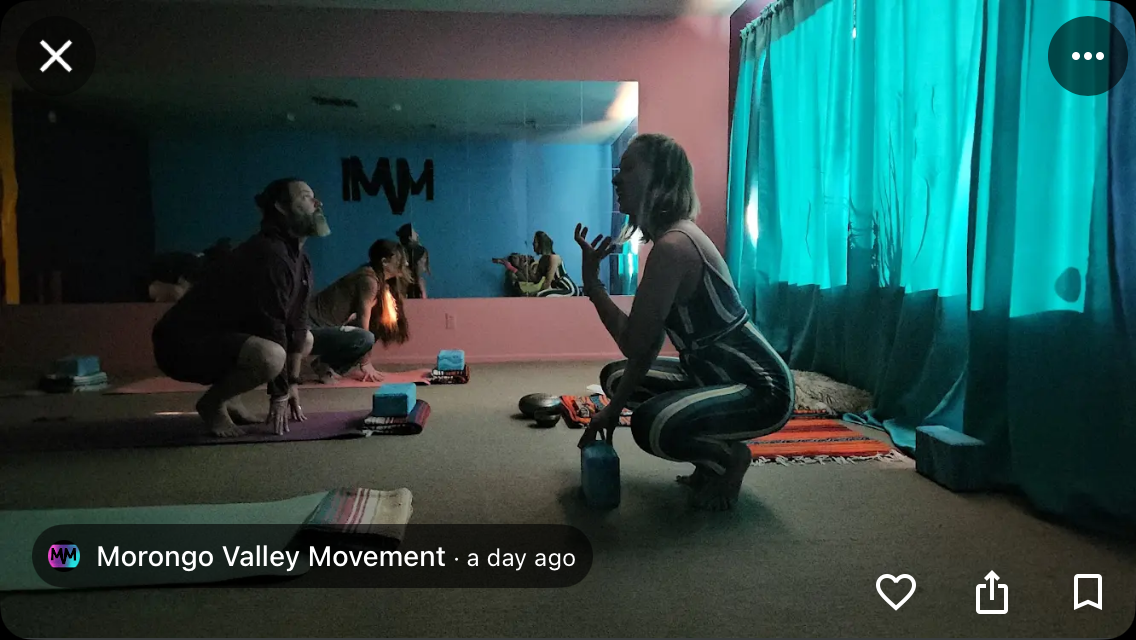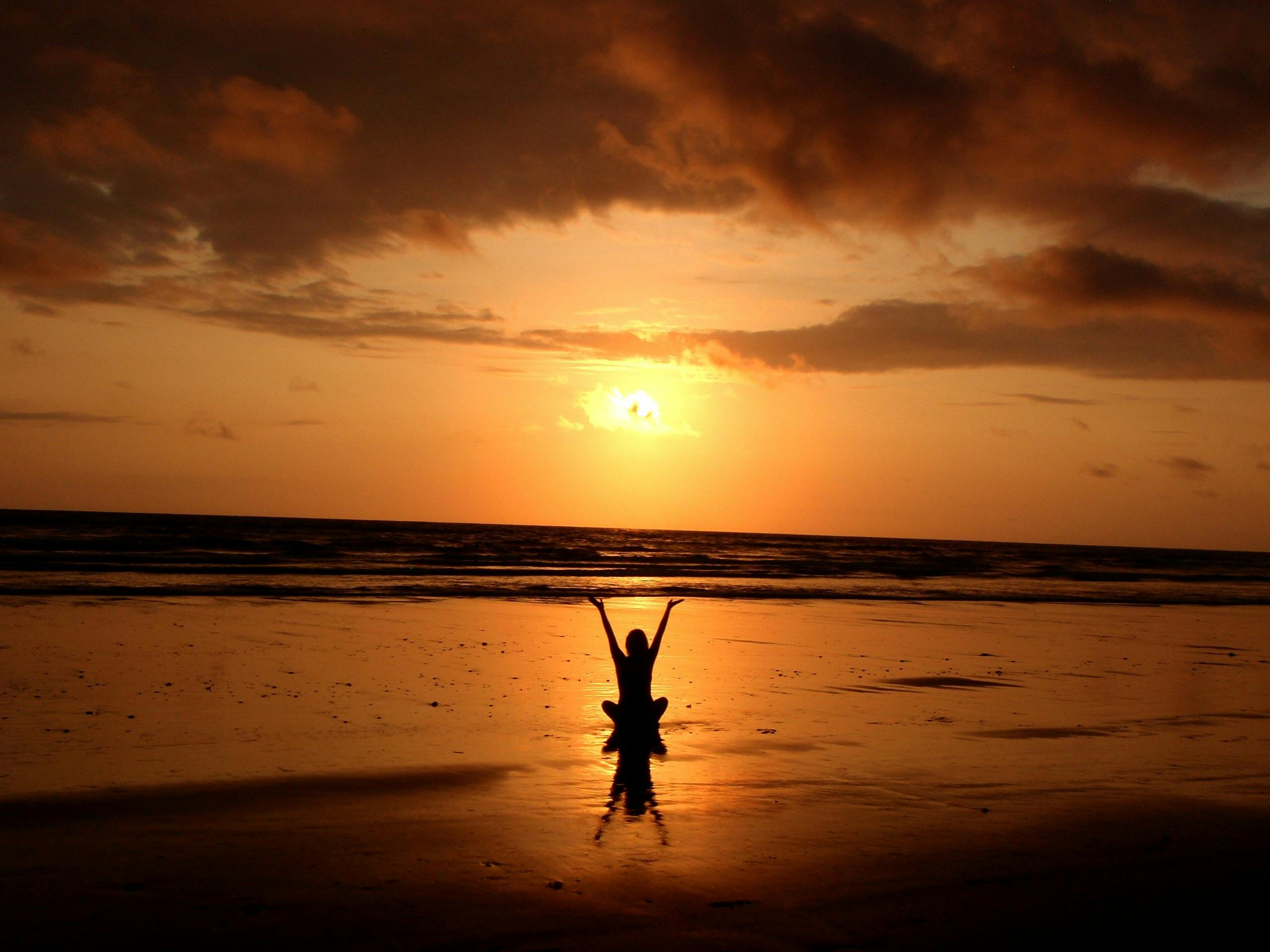Introduction
The human foot is a biomechanical masterpiece, consisting of 26 bones, 33 joints, and over 100 muscles, tendons, and ligaments. It serves as the foundation of our posture, gait, and proprioceptive awareness. Despite its complexity and essential function, the foot is often neglected in both daily life and yoga practice. This oversight can lead to reduced mobility, poor balance, and an increased risk of injury. By incorporating foot stretching and self-massage into a yoga routine, practitioners can enhance proprioception, improve movement efficiency, and counteract the natural degenerative changes associated with aging.
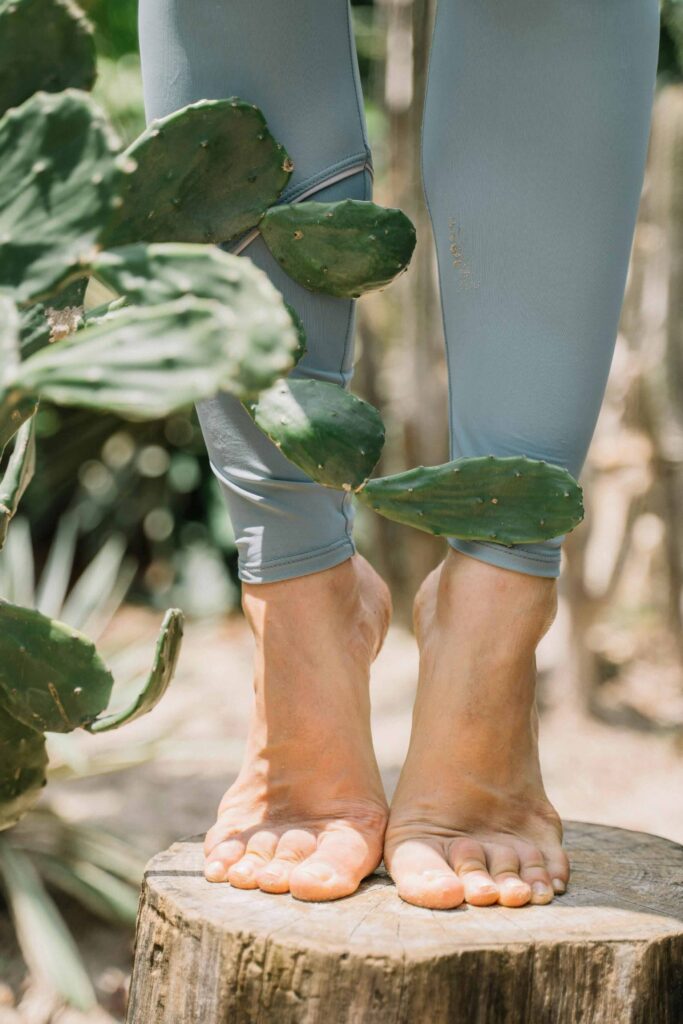
The Science of Foot Function in Yoga
From a biomechanical standpoint, the foot plays a crucial role in weight distribution and kinetic chain alignment. The plantar fascia, a thick band of connective tissue spanning the sole, works alongside intrinsic and extrinsic foot muscles to maintain the medial longitudinal arch. Studies in kinesiology show that weakened foot muscles contribute to collapsed arches, leading to compensatory strain in the knees, hips, and lower back. This underscores the importance of pre-practice foot preparation to optimize alignment and reduce undue stress on adjacent structures.
In yoga, postures such as Tadasana (Mountain Pose) and Vrksasana (Tree Pose) require precise foot activation for stability. The integration of foot exercises prior to asana practice enhances neural drive to foot musculature, fostering improved balance and reducing injury risk. Additionally, myofascial release techniques using a massage ball or manual manipulation can alleviate fascial restrictions, enhancing foot articulation and flexibility.
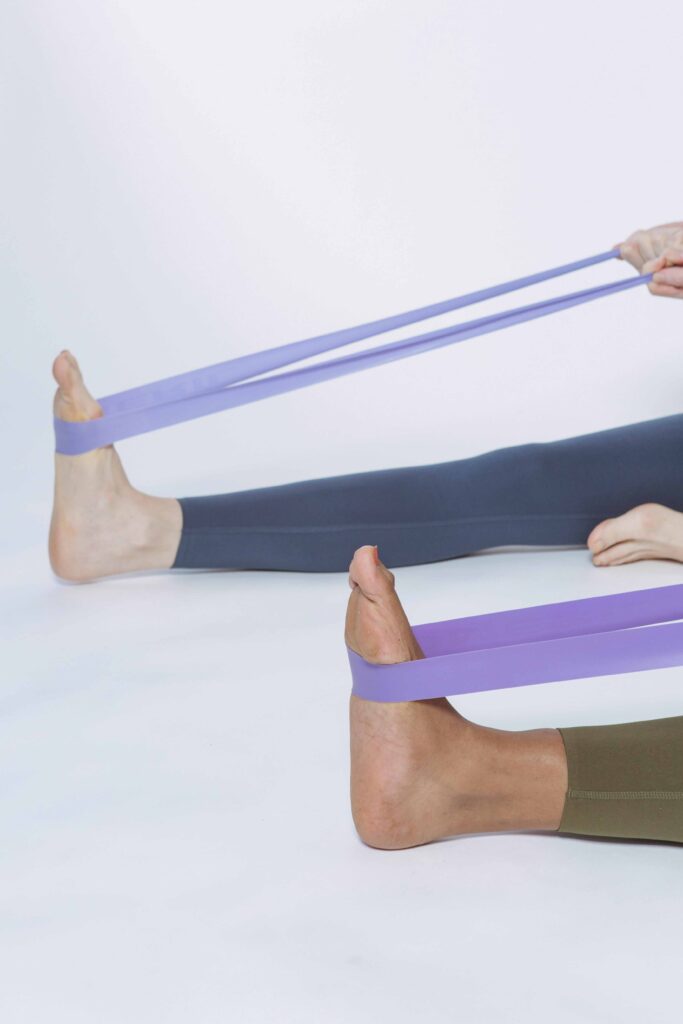
Aging and Foot Health: The Need for Targeted Practice
Aging precipitates structural and functional changes in the feet. Over time, there is a reduction in plantar fat pad thickness, decreased joint mobility, and a weakening of the intrinsic foot muscles. These changes contribute to conditions such as metatarsalgia, bunions, and reduced gait efficiency. From a neurophysiological perspective, aging also diminishes proprioceptive input from mechanoreceptors in the feet, impairing balance and increasing fall risk.
Yoga offers a corrective approach by promoting foot strength, flexibility, and sensory awareness. Specific postures such as Virabhadrasana I (Warrior I) and Utkatasana (Chair Pose) encourage active foot engagement, reinforcing neuromuscular coordination. Meanwhile, seated poses like Baddha Konasana (Bound Angle Pose) allow for targeted foot stretching, counteracting rigidity and promoting circulation. Incorporating foot rolling techniques with a massage ball can further stimulate mechanoreceptors, enhancing proprioception and restoring dynamic foot function.
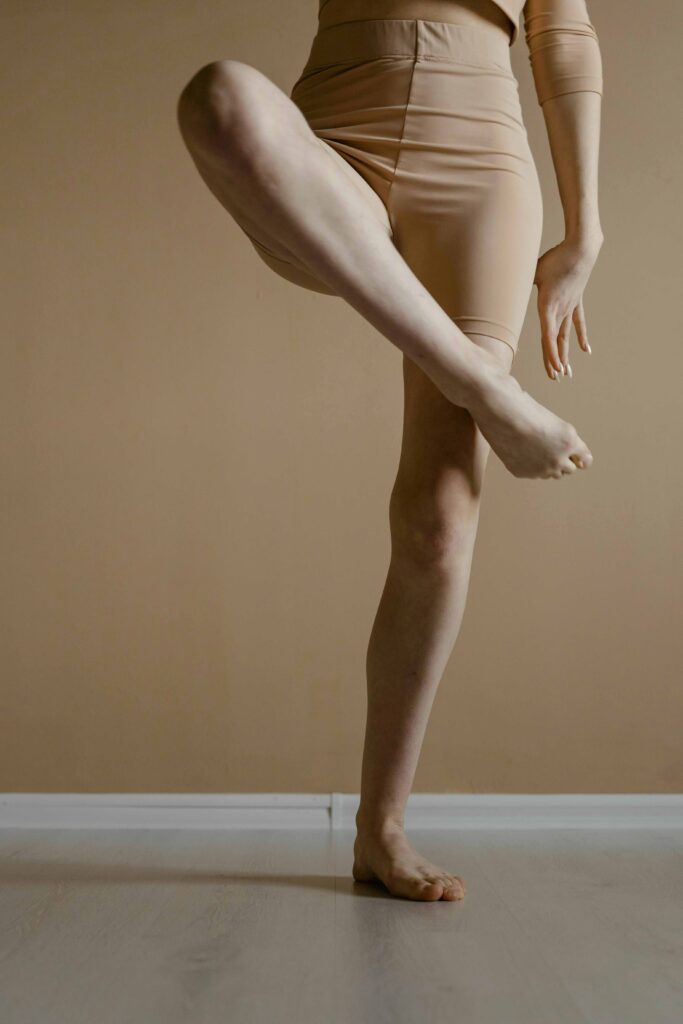
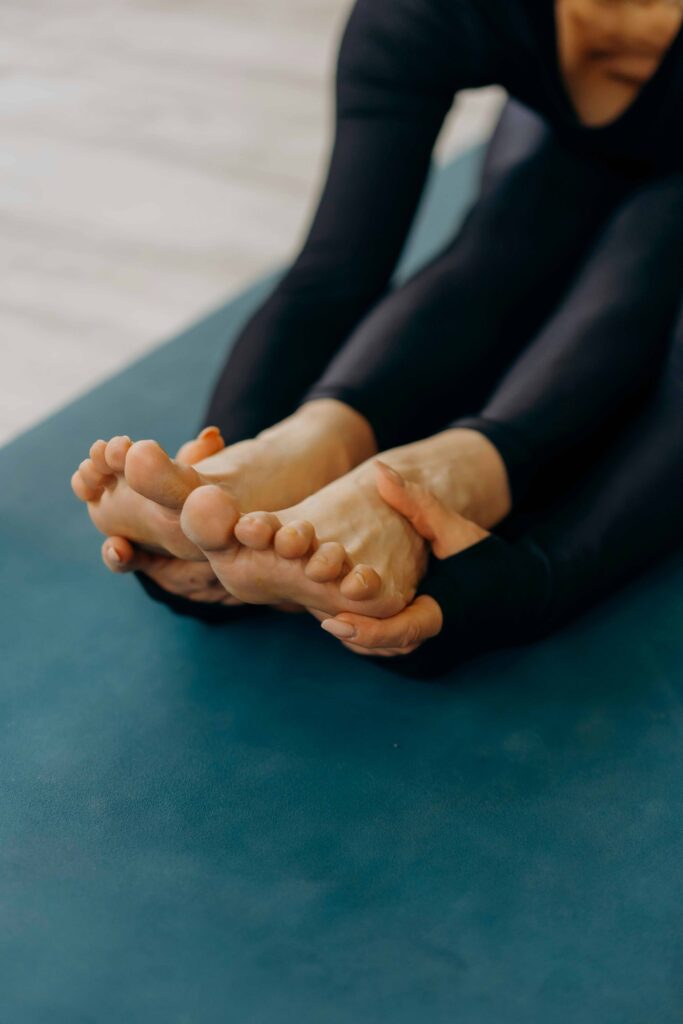
Integrating Foot Care into Yoga Practice
To optimize foot health and function in yoga, practitioners should incorporate the following:
- Self-Massage: Using hands or a massage ball, apply gentle pressure to the plantar fascia, metatarsal heads, and heel to release tension and improve circulation.
- Dynamic Toe Stretches: Engage in toe extension and flexion exercises to enhance joint mobility and counteract stiffness.
- Intrinsic Muscle Activation: Perform exercises such as toe spreading and short foot exercises to strengthen the arch-supporting musculature.
- Proprioceptive Drills: Practice standing poses on an unstable surface, such as a folded yoga mat, to improve sensory feedback and balance.
- Asana Modification for Aging Feet: Utilize props such as blankets under the heels in Malasana (Garland Pose) or straps for foot dorsiflexion in Supta Padangusthasana (Reclining Hand-to-Big-Toe Pose) to accommodate reduced range of motion.
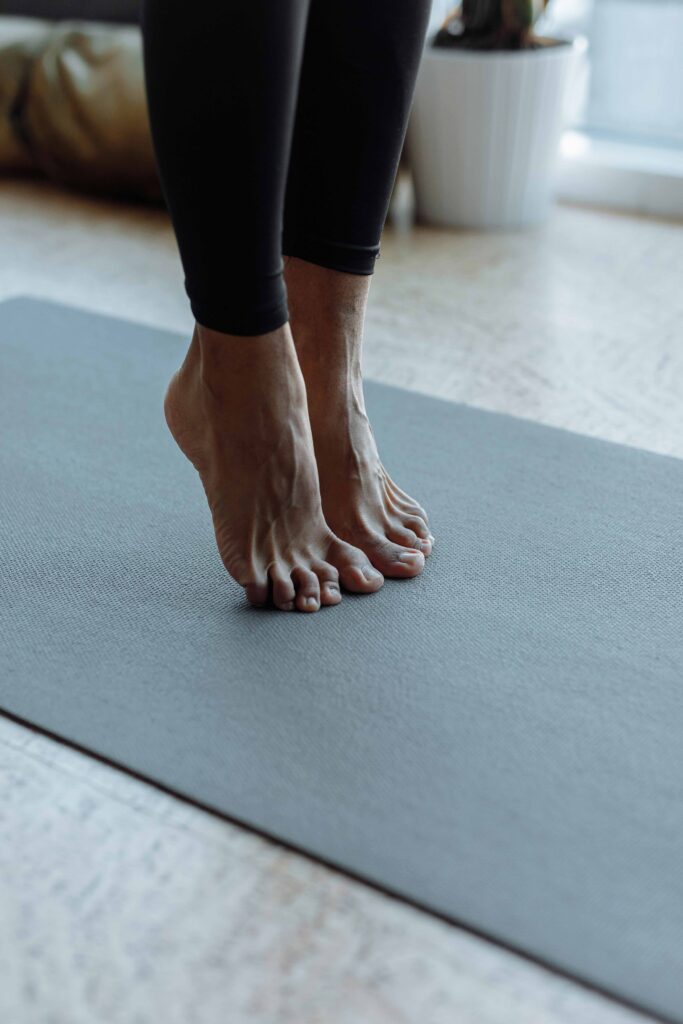
Conclusion
The feet serve as the foundation of movement and balance in yoga. Neglecting their care can lead to compensatory strain throughout the kinetic chain, while targeted stretching and massage can enhance foot function, prevent injury, and mitigate the effects of aging. By integrating foot-focused practices into a yoga routine, practitioners can cultivate greater stability, mobility, and awareness—ultimately deepening their connection to both the physical and energetic body. In the broader scope of yoga philosophy, caring for the feet is an act of grounding and honoring the very structures that support our movement through the world.


